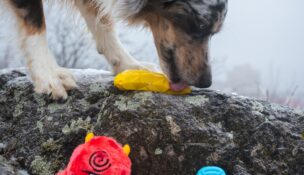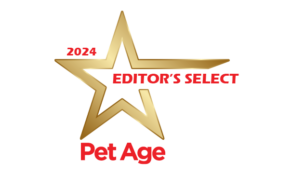Behind the Scenes of Global Pet Expo
Colleen Murphy //March 21, 2017//
Anne Ferrante is a busy person, and that might have never been truer than during the months leading up to Global Pet Expo. It was then that Ferrante, the senior vice president of member relations and business development for American Pet Products Association (APPA), was helping to organize this year’s event, making it the massive occasion it is.
And the hours upon hours of planning that Ferrante and her team put into planning this year’s show will not only make it a success but also set it apart from past years’ expos—due in large part to the sheer enormity of the extravaganza.
“Global Pet Expo 2017 is the largest to date and will have more advantages for both APPA members and attendees than ever before,” Ferrante said. “With increased exhibitor and attendee participation, more PR opportunities and registered media outlets and the most qualified and diverse buying audience yet, there will be plenty of opportunity for everyone. With participation representing every facet of the pet industry, if you’re doing business in pet, you’ve got to be at Global Pet Expo.”
But creating growth is nothing new to Ferrante. According to her profile on the APPA website, in the more than 10 years Ferrante has been with APPA, she “has been instrumental in growing the Association’s membership from 300 in 1998 to more than 1,000 companies.”
With this track record, Ferrante being able to help expand Global Pet Expo to the magnitude we know it to be today is probably what we should have expected from her. Pet Age recently asked her about the preparation needed to organize such a big event, what makes this year’s Global Pet Expo a standout, and predications for future industry trends.
Q What approach did you take to planning for this year’s Global Pet Expo?
A Planning for Global Pet Expo 2017 focused largely on assisting members to prepare for the show, so as to maximize their experience and opportunity.
For example, we’ve expanded our Market Access Program to assist APPA members with their global trade by providing our enhanced Retail Market Tour at Global Pet Expo. On this tour, U.S. and international manufacturers and retailers will visit four local retail outlets to see American merchandising strategy in practice. This year, we’ve added to the program a continental breakfast and market briefing, an on-board moderator and store guide as well as an expanded study of key merchandising topics.
For U.S. food and agriculture exporters, we’ve prepared our annual International Pet Food Buyers Mission. Co-sponsored by APPA and Food Export USA, through this mission, APPA manufacturers will be matched with qualified buyers from eight countries. In 2016, Pet Food Buyers Mission participants reported actual sales of over $5.9 million! This Buyers Mission is a cost-effective, convenient way to generate new sales leads as well as make an international impact with your U.S. pet food and agricultural products.
In the lead-up to Global Pet Expo, we also assisted U.S. food and agricultural exporters to register for The Branded Program. Since Global Pet Expo has such a large and diverse international buying audience, the show is considered by the U.S. government to be a valid exporting opportunity. Through this program, qualified exhibitors can receive a 50 percent government reimbursement for many Global Pet Expo expenses, including exhibit fees, freight, booth furnishings and more.
APPA pays great attention to developing member benefits and pre-show planning tools exclusively for exhibitors. By assisting with member engagement in these services and marketing tools, we can facilitate business growth and increase member brand and company exposure before and during the show, while maximizing marketing investment.
Q How will this year’s expo be set apart from any other year?
A This year, Global Pet Expo features the much-anticipated launch of the 2017-2018 APPA National Pet Owners Survey. If you want a deep dive into the most recent industry data, be sure to attend the debut seminar with Julie Springer, APPA research analyst, on Thursday, March 23.
We’re also very pleased with the continual growth in the number of media outlets that attend the show. This year, well over 200 media professionals will attend, and even more impressive is the increase in the diversity of media attention well beyond trade publications and pet media. We’ll welcome major newspapers, like The Wall Street Journal and Chicago Tribune; popular publications, like the Huffington Post and House Beautiful; as well as reps from the TODAY show and CNN.
Q How many of this year’s exhibitors are new?
A The numbers have grown dramatically. This year, Global Pet Expo exhibitors will include many of APPA’s nearly 300 new members. APPA’s membership includes both established and new companies from over 35 countries, so we’ll see a vibrant international participation as well as fresh and exciting ideas from our newest members.
Q This year, Global is debuting country-specific pavilions for international exhibitors. How do you think this replacement of the former International Pavilion will impact attendees’ and exhibitors’ experiences?
A The conversion from the International Pavilion to country-specific pavilions significantly advances the opportunity for international participation at Global Pet Expo. Country-specific pavilions provide a more focused shopping experience for attendees. These pavilions allow for better branding and promotional opportunities for exhibitors and offer a cost-savings turnkey exhibit option. In many cases, participation in a country-specific pavilion affords international exhibitors the advantage of government-sponsored export funding from their country.
Exhibitors in these pavilions can benefit from association with other leaders from their country while showcasing the uniqueness and character of products often locally manufactured in or sourced from their region.
Q What are some trends that APPA is predicting we will be seeing in the next few years?
A APPA has been closely examining pet ownership by generation and is happy to report in the 2017-2018 National Pet Owners Survey that millennials are stepping up to fill the void left by aging baby boomers who no longer own pets. Millennials now account for 35 percent of total pet owners, while baby boomers have dropped to 32 percent. Millennial pet owners are proving to be a unique group of pet owners, and APPA is watching their purchasing and behaviors with great interest. In addition to treating their pet as a member of the family, these pet owners view their pet as an extension of themselves—and they want nothing but the best for their pet.
Millennial owners want to own all the latest “gadgets” and efficiencies to take care of their pets the way they take care of themselves. Millennial dog owners are more likely to have health insurance for their dog and use organic food. They pay for day care, spa visits and pet sitting, and they take their dog with them on daily errands and to pet-friendly restaurants. Brand names and good customer service are reasons that they will, or will not, purchase. And pets owned by millennials are more likely to be seen wearing trendy clothes, exercising on a treadmill or having a party. Millennials are jumping into the pet market with great enthusiasm. They are continuing the on-going trend in humanization of pets and are taking it to the next level in terms of products and service consumption.
With regards to online trends, over 50 percent of pet owners become aware of new pet products through pet product company websites and Facebook pages, and nearly half of pet owners are purchasing food and supplies online. As a manufacturer, you’ll want to pay special attention to positioning your company website as an effective information source and to increasing your internet customer base by optimizing the online shopping experience for your products.
Q What are some things that you think we should all start paying a little more attention to in order to make the industry stronger, and why?
A APPA is leading the way by supporting several very important industry efforts. Understanding the issues and getting involved is paramount to keeping the industry vibrant.
The Pet Leadership Council (PLC) is working to ensure the quality of breeders and to prevent pet sale bans. The PLC’s timely work is making a difference towards keeping the supply of pets healthy and available.
The Human Animal Bond Research Initiative (HABRI) is working to see that the human-animal bond is universally embraced and recognized as an essential element of human wellness. HABRI uses scientific research to support and add the credibility necessary to advance this cause.
The Pet Care Trust’s Pets in the Classroom program provides grants for teachers to have pets and pet products in the classroom. Kids benefit from exposure to pets in the classroom in ways that help shape their lives. The classroom pet is often what influences future pet ownership, and this very successful and innovative program establishes healthy child-pet relationships, educates on responsible pet care practices and generates interest and enthusiasm for tomorrow’s pet owners.
These three programs are all key drivers toward strengthening different areas of the industry.
Q What have you found to be the most fascinating changes in the industry over the past few years?
A There are a few things that have been quite meaningful changes in the industry. The emergence of the humanization of pets and pet products on a worldwide level definitely provides a very interesting and robust direction for growth.
I’ve been in the industry for nearly 20 years, during which time APPA membership has more than quadrupled in size from 300 to nearly 1,250 member companies. Also, during this time, the industry’s commitment to healthy pets and responsible care practices has continually grown. It’s inspiring to be part of this global growth and to see how the industry is constantly refueled by innovation, by the savviness of emerging companies and by the strength of well-established companies.



















